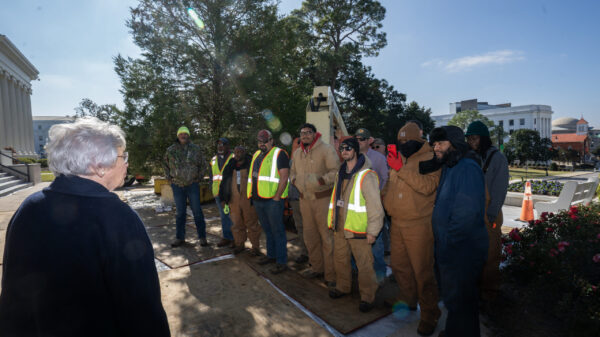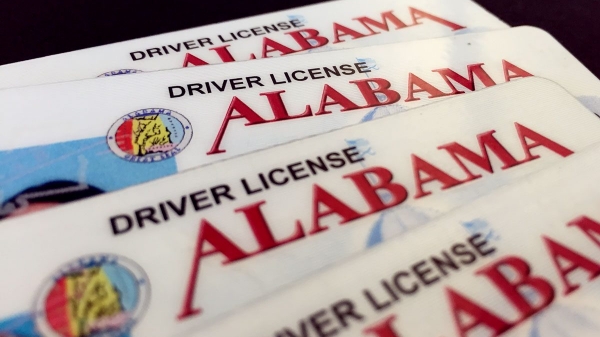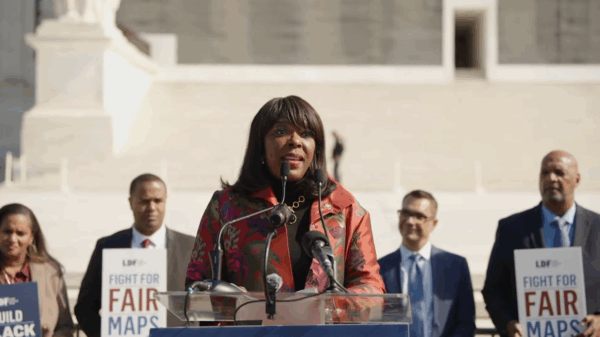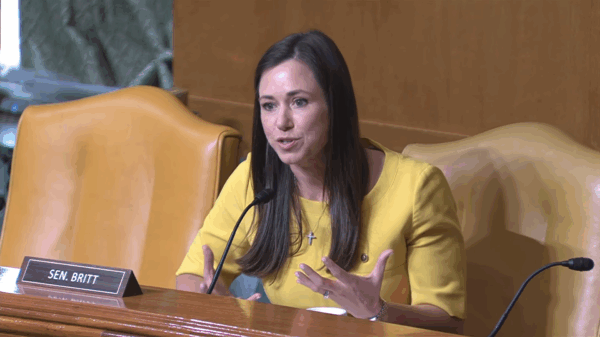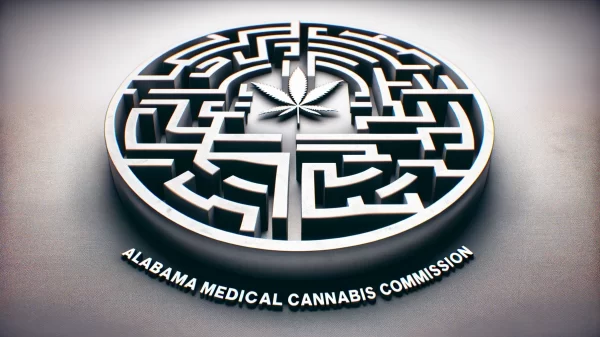When does Alabama law first protect a human life as a person?
The current Chief Justice of the Supreme Court of Alabama, in his 2024 concurring opinion in Lepage v. Center for Reproductive Health, gives his answer to this question. He concludes that Alabama law fully protects a frozen embryo, fertilized in a lab, as a person. As support, the Chief Justice discusses Bible verses and the writings of Christian theologians.
Alabama’s Supreme Court has nine justices; six others reached the same result but did not expressly join the Chief Justice’s concurring opinion. Why not? Perhaps because most lawyers would agree that, under the U.S. Constitution, the Bible, the Koran, and other religious texts should not be used to interpret the law.
Yet, another writer opined, “[t]his decision does more than blur the lines between church and state; it erases them, embedding a specific religious viewpoint into law and overlooking the pluralistic society it is meant to govern.” B. Britt, Opinion: Alabama’s church-state merger and hell rides with it, Ala. Political Rep. (Mar. 4, 2024).
As a practical matter, many lawyers and nonlawyers look to religious texts – in Alabama, almost always the Bible – for answers. So, let’s put aside for now the important Constitutional question of whether the Bible should be used to interpret Alabama law.
Instead, another question is discussed below: Does the Bible support the Chief Justice’s interpretation of Alabama law? Short answer – no, it does not. Let’s look at why.
The Lepage opinions
On Alabama’s Feb. 16, 2024, the Supreme Court of Alabama released Lepage, its IVF decision holding that a frozen embryo kept in a cryogenic nursery was a “minor child” to whom Alabama Wrongful Death of a Minor Act applies. Five of the nine justices joined the main opinion, making it binding precedent. The Chief Justice wrote separately and did not join the main opinion. One justice concurred in the result, with an opinion. Two justices dissented, with opinions.
The Chief Justice’s opinion, the most important for this discussion, relies on the 2018 amendment to the Alabama Constitution, which he writes is “sometimes referred to as the Sanctity of Unborn Life Amendment.” As part of discussing “sanctity,” he writes “that human life is fundamentally distinct from other forms of life and cannot be taken intentionally without justification [with] roots that reach back to the creation of man ‘in the image of God.’ Genesis 1:27 (King James).” In his conclusion, he writes “it is as if the People of Alabama took what was spoken by the prophet Jeremiah and applied it to every unborn person in this state: ‘Before I formed you in the womb I knew you, Before you were born I sanctified you.’ Jeremiah 1:5 (NKJV 1982).”
The main opinion concludes that the text of the Alabama Wrongful Death of a Minor Act “applies to all children, born and unborn, without limitation.” It relies heavily on selected definitions of “child” in modern dictionaries, not discussing inconsistent “child” definitions. The main opinion also includes “[e]ven if the word ‘child’ were ambiguous, however, the Alabama Constitution would require courts to resolve the ambiguity in favor of protecting unborn life.”
Instead of modern dictionaries, the two dissents rely on “originalism,” which here is what the Alabama Wrongful Death of a Minor Act meant when passed. Justice Sellers writes that “employing any sequence of linguistic gymnastics [] cannot yield the conclusion that embryos developed through in vitro fertilization were intended by [Alabama’s 1872] legislature to be included in the definition of ‘person,’ . . . much less the definition of ‘minor child.’” Justice Cook writes that his “deeply held personal views on the sanctity of life cannot change the meaning of words enacted by our elected legislature in 1872.”
Studying Biblical human life and person issues in 1978
An aside: I first studied what the Bible says as to these when human life becomes a person issues with the late Rev. Frank Barker, the founding pastor at Briarwood Presbyterian Church. After my parents, he was the most important influence on me growing up.
In the summer of 1978, Rev. Barker from the pulpit said a common anti-abortion position: an abortion takes the life of a human person and thus is the moral equivalent of murder. Six or seven years earlier, he had preached a sermon to comfort women that had miscarriages, telling them that a miscarriage did not result in a soul damned to hell for not accepting God’s grace, because humans did not have souls until they had breath, which was the Spirit of God, in them.
When I told my mother Rev. Barker’s inconsistency troubled me, my mother encouraged me to set an appointment with him. He graciously worked with me, a 19-year-old college student, providing reading materials, meeting several times, and analyzing together relevant Bible passages. The following are my (not Rev. Barker’s) opinions first developed in 1978.
Does the Chief Justice quote Bible verses that support his argument?
The Chief Justice quotes Bible verses that are not inconsistent with his argument, but they do not support it. Let’s look at the verses he quoted.
First Bible verse quoted: Genesis 1:27 says God “created man in His own image.” What makes man in the image of God and thus different from other creatures God created? Genesis 2:7 explains that, when God first formed man, He “breathed into his nostrils the breath of life; and man became a living soul.”
The Hebrew ruach can be translated as wind, breath or spirit. The word’s first use in the Bible is in Genesis 1:2 (NIV): “The Spirit of God [Ruach Elohim] was hovering over the waters.” The Bible can be, and traditionally was, read as God’s ruach, either His spirit, breath, or both, giving a human a soul or spirit and thus separating humans from other living, created creatures.
Being human and being alive is clearly not enough. Every human sperm is both human and alive; almost all die. No one argues God creates each human sperm as a person created in His image with a soul or spirit.
When does a human have or take on the image of God? When he or she first breathes? That seems the most likely answer, based on Genesis. When he or she can first breathe (when viable outside the womb)? When an egg is first fertilized?
In other words, accepting that God creates humans in His image does not inform us of when we have or take on a spirit or soul, thereby separating us from other created beings and become fully a person. Instead, Genesis suggests we as human life have or take on His image and become fully persons when we first breathe; but Genesis is ambiguous and not directly on point.
Second Bible verse quoted: The full NKLV of Jeremiah 1:5 provides as follows: “Before I formed you in the womb I knew you; Before you were born I sanctified you; I ordained you a prophet to the nations.” First, the full verse makes clear Jeremiah writes what God told him personally; the verse is not on its face a statement about all humans.
On the other hand, don’t most Christians believe that God forms all people? Similarly, He also forms, as examples, all animals, ants, and amoebas too. Hence, Jeremiah 1:5 tells us nothing about when we as humans have or take on a spirit or soul and thus does not tell us when we humans become a person different than God’s other created beings.
What else does the Bible say about when a human life is a person?
One approach to understanding ambiguous Bible passages is to use other Bible passages. I have heard numerous times that the Bible does not have passages relevant to abortion. One should disagree. Two Bible passages are best understood as relevant to when a human becomes a person.
First Bible passage: Exodus 21:22 (NIV) provides that “[i]f people are fighting and hit a pregnant woman and she has a miscarriage but there is no serious injury, the offender must be fined whatever the woman’s husband demands and the court allows.” From Exodus 21:22 one learns that hitting a woman and causing her to miscarry is not a serious injury and that a miscarriage is comparable to a property crime to be punished with only a fine.
Generally, Old Testament punishments were severe. Exodus 21:17 (NIV) requires that “[a]nyone who curses their father or mother is to be put to death.” Leviticus 20:10 (NIV) requires “[i]f a man commits adultery with another man’s wife – with the wife of his neighbor – both the adultery and the adulteress are to be put to death.” Instead of being the moral equivalent of murder, causing a miscarriage appears much less serious than cursing one’s parent and much less serious than adultery.
Since 1978, many Biblical scholars and commentators have attempted to explain why this passage from Exodus does not imply what it on its face appears to imply. Perhaps these explanations are correct, but the best interpretation is almost always the simplest one.
Second Bible passage: Numbers 5:11-31 instructs that, if a husband suspects his wife has committed adultery, he is to take her to the priest. The priest is to give her “bitter water” to drink. As Numbers 15:27-28 (NIV) explains: “If she has made herself impure and been unfaithful to her husband, this will be the result: When she is made to drink the water that brings a curse and causes bitter suffering, it will enter her, her abdomen will swell and her womb will miscarry, and she will become a curse. If, however, the woman has not made herself impure, but is clean, she will be cleared of guilt and will be able to have children.”
If abortion were the moral equivalent of murder, would the priest be involved in giving an adulterous woman a medication abortion? If a fertilized egg in the womb were a person, would the result of the test be a medication abortion?
The Hebrew words translated here as “miscarry” are literally “thigh shall rot” or “thigh shall fall away,” which appears to be a euphemism for miscarry or miscarriage. If the correct translation is not miscarry, the passage makes no sense – the jealous husband would bring his wife to have the priest test if she has committed adultery and would leave without an answer. And, if not miscarry, an innocent wife would have been tested and leave without having had her name cleared.
Again, since 1978, many Biblical scholars and commentators have attempted to explain why this passage from Numbers does not mean what it on its face appears to mean. Perhaps these explanations are correct, but the best interpretation is almost always the simplest one.
Summary and Conclusion
In summary, to answer whether a fertilized egg is a person protected by Alabama law, the Chief Justice relies on Bible verses that do not support his position. And other Bible passages are best interpreted as inconsistent with his position.
In conclusion, all should agree that probable misinterpretations of the Bible should not be used to interpret Alabama law.








